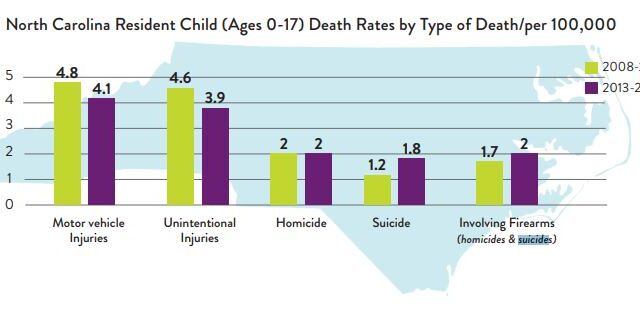


Data on youth suicides and suicide attempts released in the past week show that rates are rising among several subgroups.
On October 16, researchers at the McSilver Institute for Poverty Policy and Research at New York University published the results of a survey of nearly 200,000 high school students between 1991 and 2017. The study showed suicidal thoughts and plans had declined for all racial and ethnic groups, except for black teens, among whom suicide attempts rose 73% during that time.
Just days later, the Centers for Disease Control and Prevention released a report showing that suicide rates among people aged 10 to 24 have increased nearly 56% from 2007 to 2017, with suicide rates in the 10-14 age group tripling during that time.
These data reflect what we are seeing in North Carolina, where suicide has become the second leading cause of death among youth ages 10-17. The 2019 Child Health Report Card, produced by the NCIOM and NC Child, noted that black students in North Carolina in 2017 were twice as likely as white students to have attempted suicide in the past year, and were less likely to receive treatment for depression. Further, JAMA Pediatrics ranked North Carolina last among all U.S. states for children receiving needed mental health treatment.
“We know that suicidality can stem from untreated depression,” Michael Lindsey, lead author of the NYU study, told Reuters. “[I]n addition to the classic signs of depression, such as becoming withdrawn or having a depressed mood, black teens may present with physical complaints, such as persistent headaches or stomach aches or with interpersonal challenges, such as angry outbursts, which may be construed as behavioral problems rather than cries for help.”
The North Carolina Child Health Report Card offers three recommendations to address youth suicide in our state: